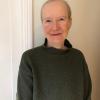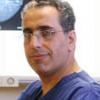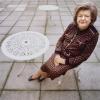The NHS Breast Screening Programme has been in place for over 20 years. This article discusses the argument for adjusting the programme to take into account the increased knowledge and understanding that has been gained about breast cancer in the intervening years.
Contents
- Introduction
- Biases of screening
- An explanation for, and the nature of, over-diagnosed cancers
- Is there a reasonable way of enhancing the benefit and reducing the harm of the NHS screening programme?
- Person preference
- Risk Assessment Risk Management
- Conclusion
- Future perspective
Introduction
Most people could be forgiven for believing that one of the mainstays in the fight against cancer is “early detection”. This belief has generated a European wide consensus that screening for cancer before it becomes symptomatic will save lives. It has also become the main plank in the government’s campaign to improve cancer survival in the UK to match the highest levels achieved in the EU. In the vanguard of this campaign, the NHS screening programme for breast cancer (NHSBSP) by mammography has been lauded as a triumph and has laid claim to the responsibility for the dramatic decline in breast cancer mortality since its initiation more than 20 years ago. If nothing else, the introduction of this programme has improved the service for the diagnosis and treatment of all women with breast cancer of any age and any stage. For that alone we should be thankful. However we cannot remain complacent and continue with a service based on a limited number of trials that are more than 20 years out of date. Our understanding of breast cancer has moved on since then and as a result our attitude to screening is worthy of a fresh look.
Biases of screening
Let us start by considering two separate but related issues; firstly biases of screening that give a false impression of benefit and secondly the over- detection of cancer “look-alikes” that if left undetected might never threaten a patient’s life. The survival from cancer is measured from the time of detection until recurrence and death. If a shift in the timing of the disease diagnosis occurs due to screening, then survival is automatically extended even if the ultimate outcome is the same; this is called lead-time bias. Of course if the “cancer” detected would never have threatened a woman’s life in the first instance then that lead time might be as long as 30 years. Next, bearing in mind that the interval between screens is anything from one to three years, it is inevitable that the fast growing tumours with a bad prognosis will appear during the intervals whilst the slow growing tumours with a good prognosis will sit around until found by mammography; this is called length bias. There is also another subtle bias that can be described as the “self-selection” bias; women who accept invitations for screening might be demographically different to those who ignore the invitation. For a variety of reasons, such women have better outcomes in the treatment of cancer, forgetting whether they were screen detected or not. The only way to account for these biases is to consider all the clinical trials of screening versus non screening and look for the pooled results described in terms of mortality i.e. the number of women dying in the screened group compared with those dying in the control group, rather than case survival. There is in fact a modest advantage to screening looked upon in those terms, as described in a recent publication in the British Medical Journal: “Breast screening: the facts—or maybe not” by Peter C Gøtzsche and his colleagues from the influential and independent, Nordic Cochrane Centre.1
In this paper they describe a synthesis of all the papers that describe both the benefits and harms of screening using absolute rather than relative numbers that make it easier for women to comprehend and the authors conclude as follows. If 2000 women are screened regularly for 10 years, one of these women will benefit from the screening, as she will avoid dying from breast cancer.
The NHS Breast Screening Programme prefer the figure 1:1000 but whatever the agreed figure, the principles of this discussion paper remain the same. However, even the figures of one woman saved in every 1000 or one woman saved in every 2000 might be an over-estimate. Remember the data was derived from the trials that were mostly started in the 1970s and reported in the late 1980s. Since then, improvements in treatment, such as the adoption of tamoxifen and adjuvant chemotherapy, have narrowed the window of opportunity and we have witnessed a drop in mortality of 30– 40% both in the age group that are invited for screening (greater than 50 years) as well as for younger women. So perhaps the correct number might be nearer to 1:3000.
Whatever the number, that one woman who benefits from a decade of screening has a life of infinite worth and if screening were as non‐toxic as wearing a seat belt there would be no case to answer. However, there is a downside to screening, namely the problem of the over‐diagnosis of “pseudo‐cancers”. It is deduced by the Cochrane report that for every life saved ten healthy women will, as a consequence, become cancer patients and will be treated unnecessarily. These women will have either a part of their breast or the whole breast removed, and they will often receive radiotherapy and sometimes chemotherapy.
An explanation for, and the nature of, over-diagnosed cancers
As discussed above, screening for breast cancer is now adopted as an unequivocal good by most of the members of the EU. One of the uncomfortable truths with screening concerns the over-diagnosis of breast cancers in screening populations.2 Over-diagnosis of breast cancer doesn’t mean an increase in false positive rates but the detection and treatment of cancers that left undetected would never threaten a woman’s life and with which she would live, in blissful ignorance until she died naturally of old age. We had always assumed that there was an over-diagnosis of duct carcinoma in-situ (DCIS), some of which had the potential of progressing to an invasive and life-threatening phenotype. However, there is now clear evidence that anything between 10% and 50% of invasive cancers detected and treated radically as a result of screening, would never threaten life.3,4 As a result, the overall mastectomy rate rises after any screening is implemented.
You might ask how this can possibly be. Don’t we know that if cancer is neglected it will progress to a life threatening condition? By way of explanation let me propose that the pathological diagnosis of cancer at screening is based on a syllogism; (a syllogism is a logical argument in three propositions, two premises and a conclusion, the conclusion being specious) A simple example might be that people who die from meningitis, harbour meningococci in their nose. This does not mean that harbouring meningococci in the nose is a lethal condition; in fact about 10% of the population harbour these bacteria.
Cancer was defined by its microscopic appearance about two hundred years ago. The 19th century saw the birth of scientific oncology with the discovery and use of the modern microscope. Rudolf Virchow, often called the founder of cellular pathology, provided the scientific basis for the modern pathologic study of cancer. However the material he was studying came from the autopsy of patients dying from cancer. In the mid-19th century pathological correlations were performed on living subjects presenting with locally advanced or metastatic disease that almost always were pre-determined to die in the absence of effective therapy. Since then, without pause for thought, the microscopic identification of cancer according to these classic criteria has been associated with the assumed prognosis of a fatal disease if left untreated. The syllogism at the heart of the diagnosis of cancer therefore runs like this: people frequently die from malignant disease, under the microscope this malignant disease has many histological features we will call “cancer”, ergo anything that looks like “cancer” under the microscope, will kill you. However, some of these earliest stages of “cancer” if left unperturbed, would not progress to a disease with lethal potential. These “cancers” might have microscopic similarity to true cancers but these appearances are not a sufficient sign of a fatal disease.
Is there a reasonable way of enhancing the benefit and reducing the harm of the NHS screening programme?
- The current NHS screening programme is based on the results of randomised controlled trials that were published before 1987 and started in the late 1960s and early 1970s.
- With mature follow-up and careful attention to biases, a relative risk reduction (RRR) in breast cancer specific mortality has been estimated as +/-15% rather than the 25% promoted by the NHS Breast Screening Programme.
- In absolute terms therefore, the numbers needed to screen over ten years to prevent one breast cancer death is between 1:2000 and 1:3000.
- Along the way the estimates of harm have increased. At the outset the hazards of over-diagnosis were ignored, and then as the rate of screen detected DCIS shot up it was still judged to be worth the cost. Now we recognise that the over-diagnosis of invasive cancers (IDC) that are not predestined to threaten a woman’s life is a problem. The extent of over-diagnosis is debatable but if you include DCIS and IDC it amounts to about ten cases treated unnecessarily for every life saved.
- We are also using state of the art imaging and modern therapy to service a programme based on data that is 20 years old. It is also worth re-iterating that improvements in the treatment of symptomatic patients since the mid-1980s leaves a much narrower window of opportunity for screening.
- Finally we should remember that only one in 25 women are predetermined to die of breast cancer so we may be in danger in losing sight of the more important killers such as cardio-vascular disease. 5
- So where should we go from here? To close the programme is politically unacceptable. I would therefore make two practical propositions for research and development. One concerns “person preferences” and the other concerns the more efficient use of scarce resources that I will refer to as risk assessment/risk management (RARM).
Person preference
Since 1997 when I resigned from the NHSBS committee I have expressed my concerns on the issue of informed choice for women invited for screening. The NHS has now accepted this point and agreed to rewrite the letters of invitation.
My concern is that the mistakes of the past wqill be repeated if we leave this task to those with a conflict of interest. For this reason I think there are two related areas of research. First the development of an information pack that includes decision aids. This could be used in a person preference study where well women might be offered sliding scales of benefits and harms to find the point at which screening is judged acceptable.
Risk Assessment Risk Management
The beauty of a risk assessment risk management is that it provides a platform for the management of all women in an attempt to reduce all causal mortality as well as mortality from breast cancer where mammographic screening is one component of an integrated programme. The first step is to set up a nationwide facility for risk. Women would then be offered the opportunityto accept this service. Initially a practice nurse could administer this questionnaire but it would be quite easy to also transfer this to a web-based programme. From the read-out an initial triage could be agreed. Those at the most extreme end of the risk spectrum could be invited to a clinical genetics consultation. At the other extreme, those with a small relative risk might be reassured and given lifestyle advice on diet, alcohol, tobacco and exercise that might not only impact on the risk of breast cancer but also on the more important risks of cardio-vascular disease. Those in between could then be invited to a special clinic for the second step. At this clinic women of 45 or older could have a mammogram to determine breast density that might also be kept as a baseline but also provide additional evidence about risk (the greater the mammographic density, the higher the risk). Those with radiological abnormality at this stage would be investigated in the accepted way. If the mammographic density is low and the repeat estimate falls to a low relative risk then they would be reassured and given lifestyle advice. Those that remain with a higher risk would be offered screening. In addition those who were pre-menopausal might be offered prevention with tamoxifen and those who were post-menopausal could be offered entry into the IBIS II trial (a study comparing tamoxifen with arimidex for the chemo-prophylaxis of breast cancer).
Conclusion
To carry on regardless is no longer acceptable, nor is political spin the answer. Women are now better informed and the demand for change comes from them as well. The NHSBSP has indirectly led to the provision of the best specialist services for the diagnosis and treatment of symptomatic breast cancer in the world, riding on the back of the screening units. The centralisation of care has led to a dramatic fall in breast cancer mortality in the UK over the last two decades. If we can now add to this the prevention of cardio-vascular disease and a risk adjusted screening programme for breast cancer then everyone is a winner.
Future perspective
In years to come mammographic screening will be looked upon as “intermediate technology” that was based on an incomplete knowledge of the growth kinetics of breast cancer. Better treatment of clinically apparent disease, a better knowledge of the genetic predisposition to the disease and chemo-prevention will probably make screening obsolete in 10–20 years. It is complacent to continue with the programme in an unchecked way that has so far denied women an informed choice.
References
- Breast screening: the facts—or maybe not. Gøtzsche PC, Hartling OJ, Nielsen M, Brodersern J, Jørgensen KJ,BMJ. 2009;338,446–448
- Rate of over-diagnosis of breast cancer 15 years after end of Malmö mammographic screening trial: follow up study. Zackrisson S, Andersson I, Janzon L, Manjer J, Garne JP, BMJ. 2006;332:689–692
-
Should I be tested for Cancer? Maybe Not and Here’s Why. H.Gilbert Welch
University of California Press, 2004, ISBN 0520239768. - Incidence of breast cancer in Norway and Sweden during introduction of nationwide screening: prospective cohort study. Zahl PH, Strand BH, Maehlen J, BMJ. 2004;328:921–924.
- Putting the risk of breast cancer in perspective. Bunker JP, Houghton J,Baum M, BMJ. 1998; 317:1307–1309.








